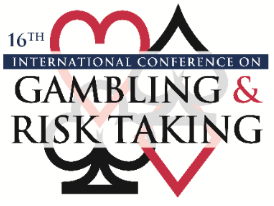Submission Title
Session Title
Session 3-2-D: The Math of Game Play
Presentation Type
Event
Location
The Mirage Hotel & Casino, Las Vegas, Nevada
Start Date
9-6-2016 10:30 AM
End Date
9-6-2016 12:00 PM
Disciplines
Control Theory | Dynamic Systems | Economics | Finance | Finance and Financial Management | Non-linear Dynamics | Other Economics | Statistics and Probability
Abstract
The Kelly criterion gives the appropriate bet size in idealized situations with known parameters. In financial trading situations parameters are generally unknown and the mathematical assumptions underlying the Kelly proof are not met precisely. Moreover a risk manager typically must cooperate with a trader who may be skeptical about both the Kelly criterion specifically and the concept of mathematical optimization of bet size in general.
This presentation tackles the problem of designing a Kelly-based system for setting trade risk management parameters that is both self-correcting (the system delivers good results even if initial parameter are misestimated or parameters change) and acceptable to skeptics (its performance can be continuously validated).
Keywords
Financial trading, Kelly betting, robust methods, skepticism
Streaming Media
Included in
Control Theory Commons, Dynamic Systems Commons, Finance Commons, Finance and Financial Management Commons, Non-linear Dynamics Commons, Other Economics Commons, Statistics and Probability Commons
Self-Correcting Kelly Strategies for Skeptical Traders
The Mirage Hotel & Casino, Las Vegas, Nevada
The Kelly criterion gives the appropriate bet size in idealized situations with known parameters. In financial trading situations parameters are generally unknown and the mathematical assumptions underlying the Kelly proof are not met precisely. Moreover a risk manager typically must cooperate with a trader who may be skeptical about both the Kelly criterion specifically and the concept of mathematical optimization of bet size in general.
This presentation tackles the problem of designing a Kelly-based system for setting trade risk management parameters that is both self-correcting (the system delivers good results even if initial parameter are misestimated or parameters change) and acceptable to skeptics (its performance can be continuously validated).

Comments
Attachment: PDF containing 30 slides
Title slide: Self-Correcting Kelly Strategies for Skeptical Bayesians